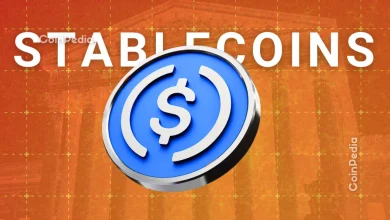
Pi Network chooses 100B coin supply to keep Pi affordable and accessible for global adoption.
80% of total supply allocated to community rewards, organizations, and liquidity pools.
Rejects burning 20B tokens, avoiding price spikes that exclude new developing-country users.
Pi Network plans to control inflation through halving and KYC, with only 7.81B coins circulating currently.
From its early days as a simple “Tap to Earn” experiment to its push toward an open-source future, Pi Network has come a long way. Now boasting over 60 million users worldwide, the project is preparing for wider adoption while firmly maintaining a total coin supply of 100 billion.
Many community members suggest burning at least $20 billion in tokens, but Pi Network isn’t doing this to reduce the supply.
Let’s find out why.
Why Pi Network Chose $100B Supply
Pi Network chose a 100 billion PI coin supply to make sure the project can include people from all over the world, not just early adopters. A large supply means there will be enough coins for millions of users, both now and in the future, without making them too scarce or expensive.
Most of these coins are reserved for the community through mining rewards, which will keep people engaged and contributing to the ecosystem for years to come. Meanwhile, the big supply makes it easier to use Pi coins for trading, buying things, and making new apps
Only a small portion of the 100B supply is in circulation right now, around 7.81 billion, with the rest released slowly over time as more people join and verify their accounts.
Why Pi Network isn’t Burning Tokens
Unlike some other cryptocurrencies, Pi Network doesn’t “burn” coins to make the total number smaller. Pi team suggests that reducing the supply to 20 billion, as some suggest, would raise prices too fast and shut out many new users, especially in developing countries.
Therefore, instead of permanently destroying tokens to control inflation, Pi relies on halving, gradually reducing mining rates, and strict KYC verification to manage the number of coins in circulation.
This means that although the total supply is 100 billion, only an estimated 10–20 billion will be available on the open network in the early stages.
Coins for the Community First
Pi Network plans to put most of its coins in the hands of its users, which is around 80% of the supply. Out of the total supply, 65% goes to mining rewards for community members, 10% to local Pi-related organizations, and 5% to liquidity pools that keep the network running smoothly.
The remaining 20% is for the team building the project. This approach aims to prevent “whale” dominance, where a few large holders control the majority of the currency.
Trust with CoinPedia:
CoinPedia has been delivering accurate and timely cryptocurrency and blockchain updates since 2017. All content is created by our expert panel of analysts and journalists, following strict Editorial Guidelines based on E-E-A-T (Experience, Expertise, Authoritativeness, Trustworthiness). Every article is fact-checked against reputable sources to ensure accuracy, transparency, and reliability. Our review policy guarantees unbiased evaluations when recommending exchanges, platforms, or tools. We strive to provide timely updates about everything crypto & blockchain, right from startups to industry majors.
Investment Disclaimer:
All opinions and insights shared represent the author's own views on current market conditions. Please do your own research before making investment decisions. Neither the writer nor the publication assumes responsibility for your financial choices.
Sponsored and Advertisements:
Sponsored content and affiliate links may appear on our site. Advertisements are marked clearly, and our editorial content remains entirely independent from our ad partners.








